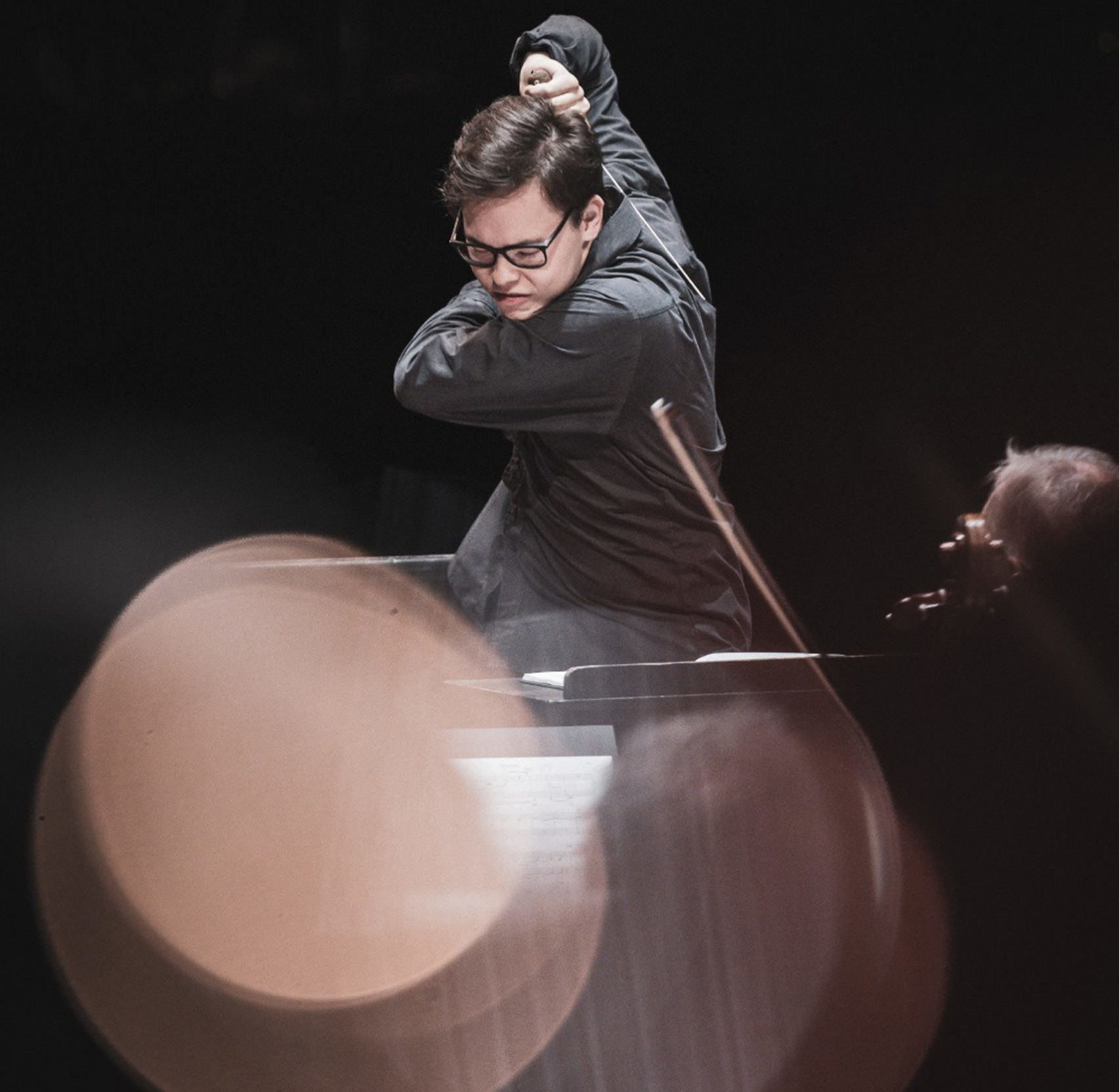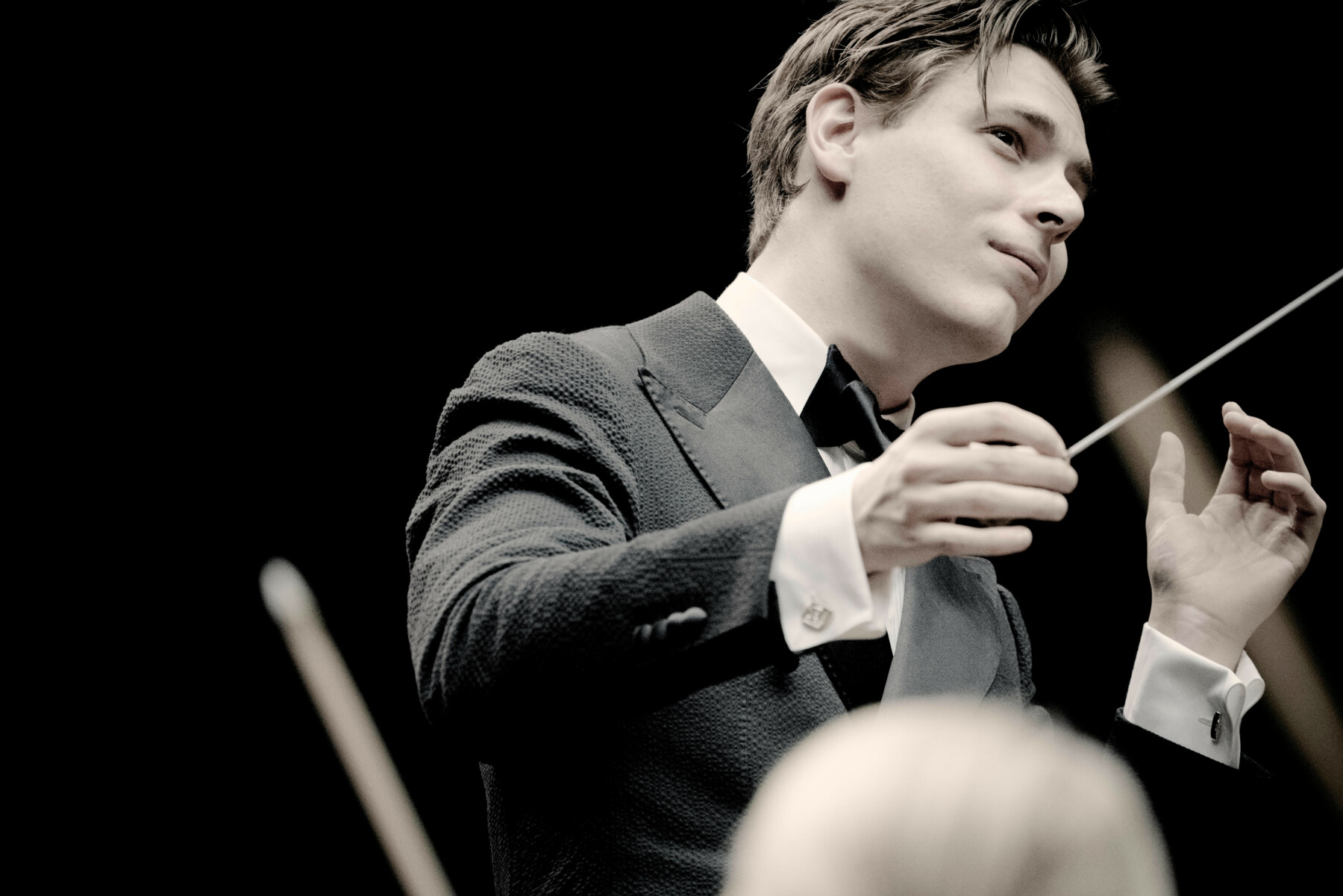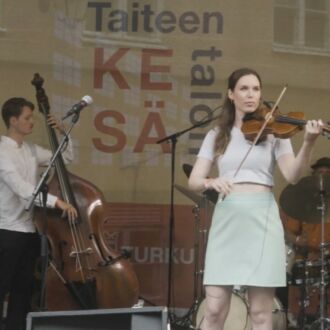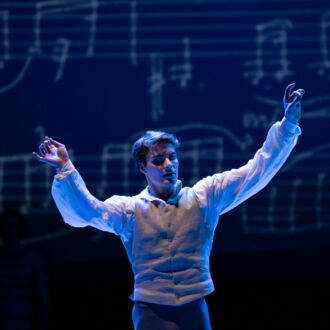In classical music circles, Finland possesses a longstanding reputation as a hotbed of conductors. It’s an intensely competitive field.
Established names such as Susanna Mälkki, Esa-Pekka Salonen, Sakari Oramo, Jukka-Pekka Saraste, Osmo Vänskä and Hannu Lintu are all 55 or older, but a new crop of rising young Finns shows that the country fosters conducting talent from one generation to the next. One common factor behind all these baton-wielders has been professor Jorma Panula and the training system he set up at the Sibelius Academy in Helsinki.
Panula (born in 1930) has taught several of the most in-demand young Finnish conductors: Emilia Hoving, Tarmo Peltokoski and Klaus Mäkelä, all under 30 at the time of writing.
How an orchestra reacts

A conductor needs a “deep understanding of how an orchestra reacts to your gestures,” says Emilia Hoving. Photo: Nikolaj Lund
“The pedagogical tools that Panula created decades ago are partly why there are so many prominent Finnish conductors,” says Hoving (born in 1994). “At the Sibelius Academy, conducting students get to conduct a student orchestra during their lessons, which is very important.”
The lessons are filmed, and afterwards there’s an analysis session with the professor. “This is essential to help a young conductor develop technically and get a deep understanding of how an orchestra reacts to your gestures,” says Hoving, who has led the top Finnish and Swedish orchestras, as well as the BBC Symphony, the Philharmonia, the Yomiuri Nippon Symphony Orchestra and the Royal Scottish National Orchestra. Finnish film director Anna-Karin Grönroos profiled Hoving in the award-winning documentary Conductivity.
Hoving began her studies with Panula, but most of her training happened under Sakari Oramo and Atso Almila.
Panula stirred controversy in 2014 by claiming that women don’t have enough strength for the conductor’s job. That earned rebukes from Salonen and others. It is also thoroughly disproved – if any proof is actually necessary – by the success of Finnish female conductors such as Mälkki, Dalia Stasevska and Eva Ollikainen, whom Hoving praises for holding “inspiring masterclasses” at the academy.
Stellar trajectories

Tarmo Peltokoski is known for his exuberant stage presence.Photo: Romain Alcaraz
The last prominent Panula protégé is Peltokoski (born in 2000), known for his flamboyant stage presence and dubbed “the world’s youngest star conductor” by the German broadcasting company Deutsche Welle. The Filipino-Finnish pianist is principal guest conductor at the Bremen and Rotterdam philharmonics, and music director of the Toulouse and Riga orchestras.
In May 2024, he released his first album for Deutsche Grammophon, saying, “It’s a luxury to perform Mozart with the Deutsche Kammerphilharmonie Bremen, and to put these three symphonies on record is a dream come true.” A second album is in the works, featuring music by English composer Ralph Vaughan Williams. Peltokoski is set to become music director of the Hong Kong Philharmonic Orchestra in the 2026–27 season.
The most acclaimed young Finnish conductor is Klaus Mäkelä (born in 1996), a cellist who leads the Orchestre de Paris and the Oslo Philharmonic. From 2027, he’ll be chief conductor of the Royal Concertgebouw Orchestra and the youngest-ever music director of the Chicago Symphony.
Mäkelä, too, praises Panula for his training but emphasises in interviews that his mentor’s main aim has been helping each young conductor blossom in their own unique way.
Super-important

Klaus Mäkelä is set to become the youngest-ever music director of the Chicago Symphony, in 2027.
Photo: Marco Borggreve/Oslo Philharmonic
Of course, a conductor’s job involves much more than appearing onstage. Most of the work goes on behind the scenes, from analysing scores and putting together concert programmes to leading rehearsals and coaxing orchestras to interpret works as the conductor envisages them. For all these young artists, discovering new works to premiere is a crucial part of the job.
“I feel that we can have a completely new chapter for the [Chicago] orchestra in terms of repertoire, in terms of developing the same amazing sound, but having it as flexible as possible,” Mäkelä told the New York Times in April 2024. Peltokoski has recently premiered new works such as Peruvian composer Jimmy López Bellido’s Trombone Concerto, while Hoving led the Australian premiere of US composer Missy Mazzoli’s Procession, a violin concerto.
“It’s super-important to programme contemporary works,” says Hoving. “I love doing new music, but it’s not always easy to carry out very adventurous contemporary programmes. In some places it can be difficult from the marketing point of view.”
The pandemic took a toll in this respect, she says, because orchestras had to get audiences back into concert halls, which was easier to do with familiar repertoire.
“That’s understandable, but we shouldn’t get stuck in ‘comfortable’ programming,” says Hoving. “Audiences in Finland are usually very positive and excited about contemporary music, which makes me very happy.”
By Wif Stenger, October 2024










